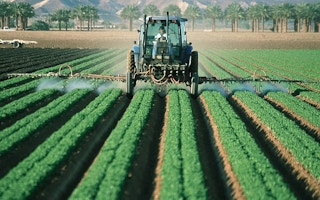In 2015, 193 countries gathered at the United Nations and pledged to end global hunger by 2030 as part of the Agenda for Sustainable Development. With less than a decade to go, prospects for achieving this goal appear bleak. Improving them will require governments and the private sector to address the global food and environmental crises simultaneously.
Food insecurity has increased in recent years as a result of conflicts and climate change, as well as the Covid-19 pandemic and the accompanying global economic crisis.
Today, up to 811 million people suffer from hunger, including 132 million additional people who were classified as undernourished during the pandemic. Another three billion people are too poor to afford a healthy diet.
Efforts to fight hunger have traditionally focused on producing more food – but this has come at a high environmental cost. Agriculture depletes 70 per cent of the world’s fresh water and 40 per cent of its land.
It has contributed to the near-extinction of around one million species. Food production generates 30 per cent of global greenhouse-gas (GHG) emissions and is the leading cause of deforestation in the Amazon.
Policymakers seeking to eradicate hunger today thus face a difficult dilemma: preventing billions from going hungry while also saving the planet. For example, a fertiliser subsidy could boost crop yields and reduce hunger, but it could also lead to excessive nitrogen use, thus ruining the soil.
Similarly, cattle and rice farms emit methane, a more potent GHG than carbon dioxide. The most effective way to reduce methane emissions is to tax them. But this would cause food prices to rise, affect poor consumers’ access to nutrition, and threaten the livelihoods of farmers and ranchers.
Countries must therefore establish an optimal level of environmental pollution that doesn’t reduce agricultural productivity or undermine the social and economic well-being of the poor.
We need a solution that feeds the most mouths without endangering the planet.
Finding a workable plan requires looking at food systems holistically – a major departure from the current siloed approach. To avoid unintended consequences, it is essential to quantify any trade-offs with data. And to turn data-driven strategies into action demands a coordinated effort to boost public and private investments.
No one intervention alone can solve the hunger problem. But studies suggest that a mix of key measures aimed at increasing farm productivity and cutting food loss and waste could reduce the number of chronically hungry people by 314 million in the next decade, and also make healthy diets available for 568 million people.
Expanding countries’ national safety nets, including school-feeding programmes, could give an additional 2.4 billion people access to a healthy diet by 2030.
Another study shows how a series of low-cost initiatives can end hunger for 500 million people by 2030 while also limiting agricultural GHG emissions in line with the goals of the 2015 Paris climate agreement.
These initiatives include agricultural research and development to produce food more efficiently, information services that provide farmers with weather forecasts and crop prices, literacy programs for women – who account for almost half of small farmers in developing countries – and scaling up social protection.
This can be accomplished if rich countries double their food-security aid to $26 billion per year until 2030, and poorer countries maintain their annual investment of $19 billion.
Automation can help to manage the trade-offs between food production and environmental protection. For example, “AgBots” that resemble small farm vehicles can identify and remove weeds.
Because they don’t use expensive chemical herbicides, robots can reduce the cost of weeding by 90 per cent and protect the soil from potentially harmful chemicals.
Likewise, artificial intelligence and cloud solutions can detect pest-infested areas using drone imaging. The data collected can help to guide farmers’ irrigation, planting, and fertilisation decisions, and indicate the best time of the year to sell a given crop.
Governments must now work with the private sector to make these high-tech, precision-farming systems available at lower costs, especially for small farmers.
The good news is that private firms are increasingly keen to promote sustainability – including through “blended finance” schemes, which combine an initial investment from governments or multilateral financial institutions with subsequent commercial financing. This kind of approach can effectively de-risk private finance and encourage investment in improving food systems.
For example, the US and Dutch governments have been working with the German coffee company Neumann Kaffee Gruppe and three European banks to provide a $25 million loan to small farmers in Colombia, Kenya, Honduras, India, Indonesia, Mexico, Peru, and Uganda for sustainable coffee production.
The banks initially rejected the proposal because small farmers are usually shut out of financial services and thus unable to prove their creditworthiness, making them a high-risk group for commercial lenders.
But the banks signed on to the scheme after the Dutch government and Neumann Kaffee Gruppe agreed to cover the first 10 per cent of losses should it not pan out, with the US government absorbing 40 per cent of the remaining losses.
Detractors will argue that individual countries should be responsible for reversing the trend of rising hunger through domestic policies. While this may be true, other problems such as GHG emissions cannot be tackled by a country or a region on its own, and must be addressed and funded globally.
Saving the planet does not have to come at the expense of feeding the poor, and vice versa. If governments get their act together, it’s still not too late to wipe out hunger by 2030.
Maximo Torero is Chief Economist of the Food and Agriculture Organisation of the United Nations.
© Project Syndicate 1995–2021










